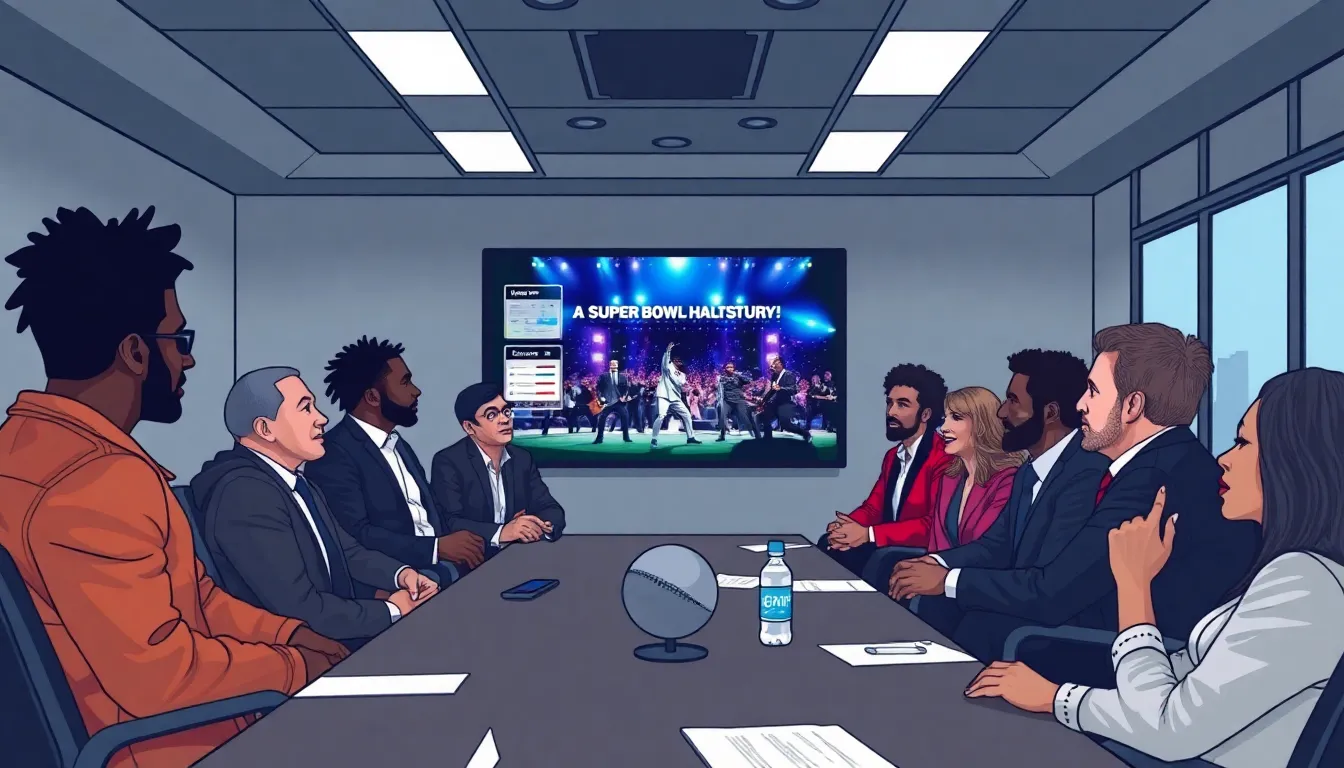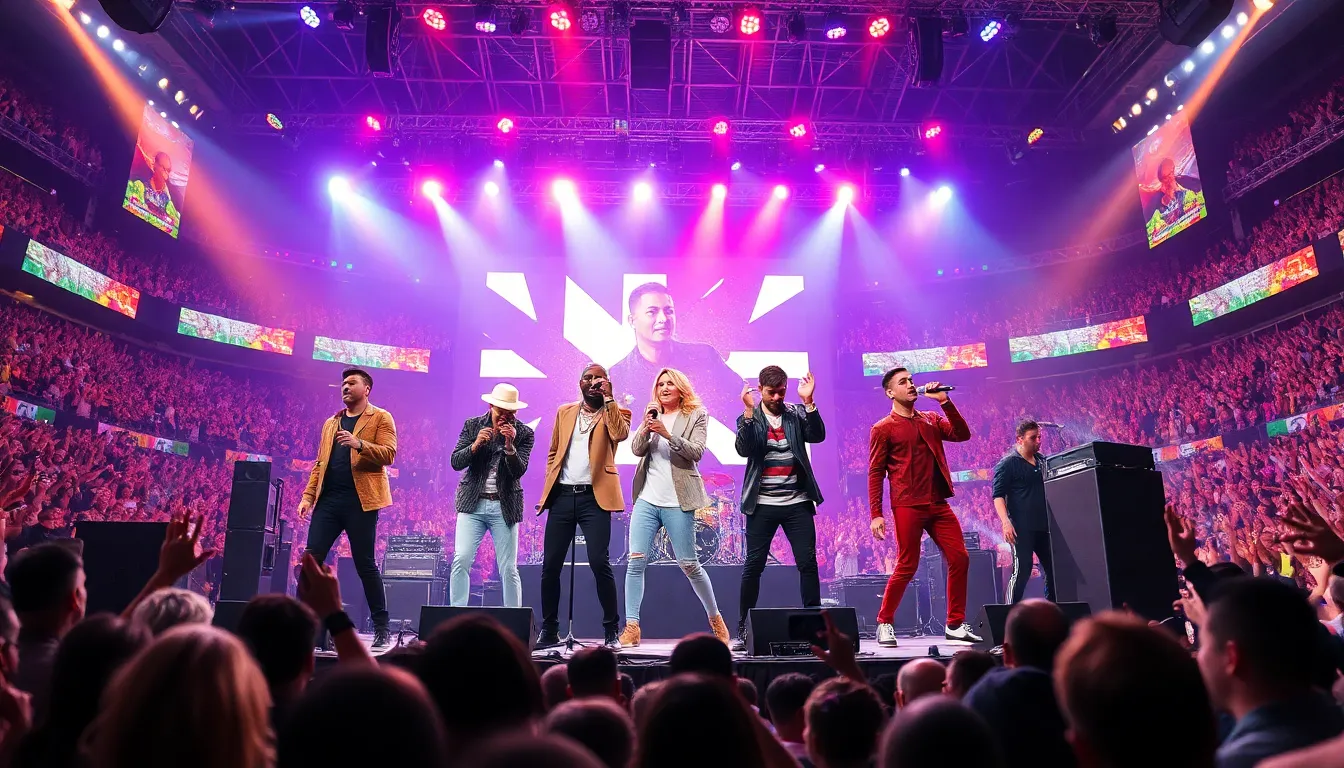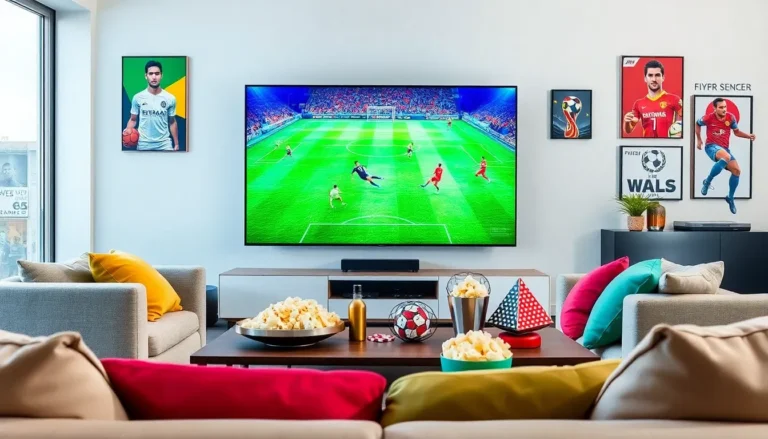When the Super Bowl rolls around, millions tune in not just for the game but for the halftime spectacle that often steals the show. Ever wonder who decides which superstar gets to strut their stuff on that glittering stage? It’s a question that’s sparked debates and a few heated family arguments over nachos and wings.
Table of Contents
ToggleOverview of the Halftime Show Selection Process
Selecting the halftime show artists involves several key players and specific criteria. The NFL plays a central role in the overall decision-making, collaborating with event producers to ensure a memorable performance. Producers often include high-profile names, such as Jay-Z, whose company Roc Nation handles artist booking.
A variety of factors influence artist selection, including current popularity, relevance to the audience and past performance history. Timing also matters; top acts should align with the Super Bowl schedule, maximizing visibility and audience engagement. Various stakeholders, such as sponsors, network executives, and advertising partners, contribute to the final decision-making.
Feedback from fans can impact choices. Social media buzz about potential performers often generates significant discussion, sometimes swaying selections. Artists who connect emotionally with the audience rarely miss the mark.
Once the primary artist is chosen, decisions about guest collaborations often follow. Multi-artist shows are common; they expand the performance’s appeal and create unique musical experiences. Planning rehearsals and stage logistics becomes vital as the event date approaches, ensuring a flawless execution.
Ultimately, the selection process for the Super Bowl halftime show represents a blend of artistic vision and commercial objectives. Each decision reflects a commitment to delivering an iconic and unforgettable experience for viewers worldwide.
Key Influencers in the Selection

The selection of performers for the Super Bowl halftime show involves multiple key influencers, each contributing to the final lineup.
The Role of the NFL
The NFL serves as the primary decision-maker in the selection process. Authority lies with league executives who prioritize factors like viewership impact and brand alignment. High-profile partnerships add another layer to their decisions. Focus remains on bringing in artists that resonate with a wide audience, ensuring maximum engagement. Strategic timing plays a crucial role in amplifying artist visibility and enhancing the event’s overall excitement. Input from sponsors often aligns with the NFL’s objectives, directly influencing artist choices.
Artist Management and Representation
Artist management teams hold substantial sway in the selection process. Managers advocate for their artists, showcasing their recent successes and marketability. Representation often provides insight into an artist’s public image, adding to their appeal. Collaboration opportunities become pivotal, as well-known artists frequently partner with emerging talent. Strong relationships between managers and event producers can enhance the chances of securing a performance slot. Ultimately, artists represented by established management enjoy advantages, boosting the likelihood of selection for this prestigious event.
Historical Context of Halftime Show Selections
The Super Bowl halftime show has evolved significantly, attracting diverse artists and generating substantial buzz. Organizations involved in selection, such as the NFL and Roc Nation, increasingly prioritize popular, relevant acts.
Notable Performers in Recent Years
Major stars like The Weeknd, Shakira, Jennifer Lopez, and Dr. Dre have headlined recent shows. Each artist brought unique styles, appealing to various demographic groups. These performers significantly increased viewership, with some shows drawing over 100 million viewers. High-profile collaborations, such as those featuring Eminem with Snoop Dogg, enhance the excitement and anticipation surrounding the event.
Changing Trends in Music Genres
Diverse music genres increasingly dominate the halftime show lineup. Hip-hop and pop have gained prominence, reflecting current musical tastes. Artists from different backgrounds frequently showcase their talents, breaking from traditional rock band performances. Similarly, a focus on inclusivity and cultural representation shapes artist selection, resonating with a broader audience. Recent years highlight not only a shift in genre but also a commitment to mirror society’s evolving interests.
The Impact of Audience Reception
Audience reception significantly influences the selection process for the halftime show. Viewers express preferences through social media, shaping decisions that producers and the NFL can’t ignore. Feedback from fans often highlights popular artists who resonate with diverse demographics, leading to selections that aim for wide appeal.
Social media platforms provide real-time reactions, which can affect future artist choices, highlighting the demand for particular genres or performers. The emotional connection audiences have with specific artists also plays a crucial role in selection, as engaging performances can invigorate viewership numbers and enhance brand associations.
Ratings from previous shows inform future selections, indicating which artists attracted higher audiences. Producers analyze trends in ratings alongside viewer demographics, ensuring that chosen artists align with the target market. Popularity metrics from streaming services further guide decisions, as access to an artist’s music can predict potential engagement during the show.
Engagement metrics also include online search traffic for artists, contributing to the ongoing discussions about who should perform. The ability to attract a younger audience often drives selections, given the NFL’s goal of maintaining cultural relevance.
This merging of audience data with artistic vision underscores the importance of public opinion in the final selection. Enhancing performances through guest artists often reflects ongoing viewer interests, creating more dynamic experiences. Ultimately, audience reception shapes the overall direction of the halftime show, reinforcing its position as a key entertainment spectacle during the Super Bowl.
The selection of artists for the Super Bowl halftime show is a complex interplay of various factors. The NFL and influential event producers work together to ensure that chosen performers resonate with a diverse audience. Current trends in music and audience feedback significantly shape these decisions, making it essential to stay in tune with public preferences.
As the halftime show continues to evolve, its impact on cultural representation and viewer engagement remains crucial. The blend of artistic vision and commercial goals aims to create unforgettable performances that captivate millions. Ultimately, the process reflects a commitment to delivering an iconic experience that connects with fans around the world.




